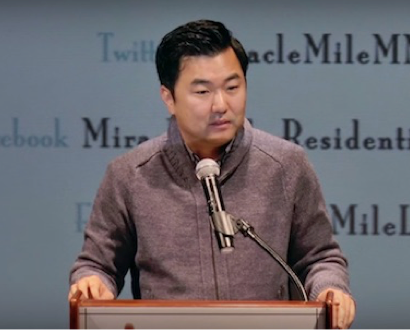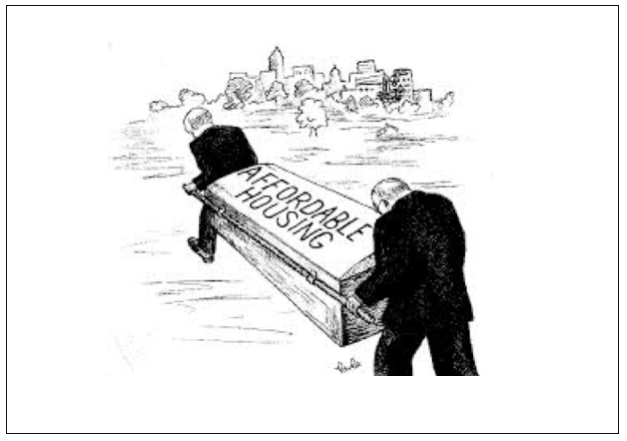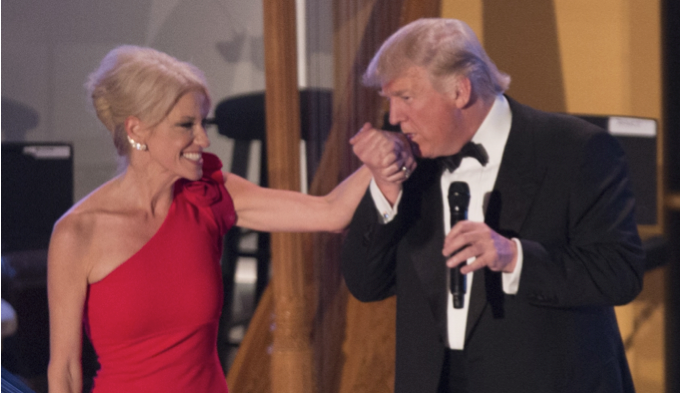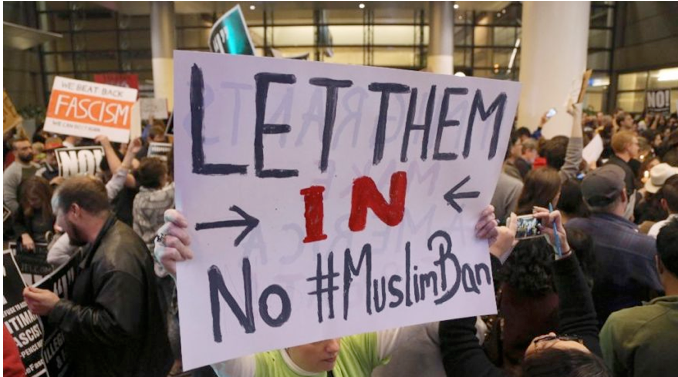David Ryu’s Miracle Mile Conflict: Can Renters Avoid a "St. Valentine's Day" Massacre?
DEEGAN ON LA-Will David Ryu’s inaction, as alleged by renters, help evict 500 Miracle Mile affordable housing renters to make room for high end developers? What had been thought of as “secured borders” may now be plums ripe for the picking for developers who are aggressively moving into Miracle Mile. They want to transform up to 500 affordable housing units currently protected by the Rent Stabilization Ordinance into massive, high-end apartment and condo complexes.
To accomplish this, they would evict workforce renters and tear down historic structures -- a blow to the community and a blow to the City’s efforts to increase the number of affordable housing units.
 This is leading to questions as to whether or not Councilmember David Ryu (CD4) has become a conduit for City Hall’s development plan for the Miracle Mile – a plan that would see it explode with high-end luxury housing taking the place of affordable housing. The upgrading of Museum Row and the installation of the Purple Line Extension subway are driving wedges between the status quo and the future. David Ryu is caught in the crossfire.
This is leading to questions as to whether or not Councilmember David Ryu (CD4) has become a conduit for City Hall’s development plan for the Miracle Mile – a plan that would see it explode with high-end luxury housing taking the place of affordable housing. The upgrading of Museum Row and the installation of the Purple Line Extension subway are driving wedges between the status quo and the future. David Ryu is caught in the crossfire.
The area between 8th Street and Wilshire Boulevard is primarily vulnerable, but properties fronting on Olympic Boulevard, as well as on the west side of Orange Grove Avenue south of 8th Street, will also be impacted.
Concerned renters and building owners in the affected area of the Miracle Mile are upset with what they see as Ryu’s lack of continued backing, if not his reversal, of the original boundaries of the historic preservation plan contained in the Miracle Mile Historic Preservation Overlay Zone (HPOZ) currently winding its way through City Hall hearings. It’s headed for a decisive vote by the City Council’s Planning and Land Use Management committee (PLUM) on February 14.
Fears of a St. Valentine’s Day Massacre by Ryu and PLUM Committee will hopefully be mitigated by a meeting with affected renters in the Miracle Mile on Monday, February 6. Ryu has been invited there so they can explain what they consider to be his abandonment of the original borders of the Miracle Mile HPOZ: namely, the strip between 8th and Wilshire, a strip along Olympic, and a strip west of Orange Grove to Fairfax – all of which have been hollowed out of the HPOZ and would be made available to developers, they say, with Ryu’s tacit approval.
At press time, Ryu’s office was unable to confirm that he would attend the renters’ meeting, but the clock is ticking. One week after the meeting the PLUM committee is scheduled to hear and discuss the issue that has suddenly caught fire: how and why did the original boundaries change?
On December 8, 2016, the City Planning Commission endorsed the Miracle Mile Historic Preservation Overlay Zone (HPOZ), but, at the last minute, the Commission rewrote the HPOZ boundaries that had been approved by the City’s Cultural Heritage Commission, recommended by the Planning Department, and endorsed by Ryu. But these boundaries excluded properties fronting on Olympic Boulevard, properties north of 8th Street, as well as properties on the west side of Orange Grove Avenue south of 8th Street.
These carve-outs of areas offering affordable housing, if allowed to stand, will become a developer’s playground.
In March, the Interim Control Ordinance now protecting the Miracle Mile, will expire and without a fully approved HPOZ covering the original territory, the land grab by developers will be on.
Until recently, the renters believed that Ryu was on their side, but in their passionate letter to him requesting a meeting, a copy of which was obtained by CityWatch, the community challenged him, saying:
“We relied upon your promise to protect our neighborhood and your vow to ensure that multifamily residents – especially so many rent stabilized apartment dwellers – from rampant development. Why did you allow your staff to remain silent when the Planning Commission redrew the boundaries, in effect, issuing eviction notices to those of us living in more than 500 historic rent stabilized units? Unless you take decisive action to undo the newly proscribed boundaries unjustifiably drawn and adopted by the Planning Commission, our neighborhood will be left unprotected.”
Ryu has scrambled under community pressure before and may be able to calm down the community with a public pledge to reinstate the original HPOZ borders. He will need to reinforce that by appearing at PLUM and publicly announcing his views since this is the key issue in dispute.
This will not entirely solve his problem: Ryu would then need to explain himself to the developers and his City Hall colleagues. Or, he may just keep it a secret as to why he will not do what the community believes he originally promised them he would do.
(Tim Deegan is a long-time resident and community leader in the Miracle Mile, who has served as board chair at the Mid City West Community Council and on the board of the Miracle Mile Civic Coalition. Tim can be reached at [email protected].) Edited for CityWatch by Linda Abrams.







 And that, you see, is where that big difference between 1968 and 2017 became apparent. Blocking a street or an intersection in 1968 was a whole different affair. An earlier generation remembers the police reading out the words, "This is an unlawful assembly." There was an official script that was colloquially referred to as "reading the riot act." Failure to disperse led to the police firing tear gas and, often enough, moving forward with clubs against the crowds.
And that, you see, is where that big difference between 1968 and 2017 became apparent. Blocking a street or an intersection in 1968 was a whole different affair. An earlier generation remembers the police reading out the words, "This is an unlawful assembly." There was an official script that was colloquially referred to as "reading the riot act." Failure to disperse led to the police firing tear gas and, often enough, moving forward with clubs against the crowds. 
